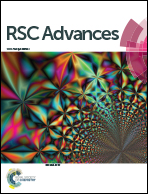Influence of electrode types on the electrohydrodynamic instability patterning process: a comparative study
Abstract
This article studies the effect that different types of patterned electrodes have on the electrohydrodynamic instability patterning (EHDIP) process for the faithful replication of micro- and nanostructures. Two types of patterned electrodes are studied. One is fully conductive, i.e. both pattern and substrate are conductive. The other type has conductive microstructures fabricated on a dielectric substrate. By employing the COMSOL™ Multiphysics software package, a rigorous numerical simulation of the EHDIP process has been carried out for both types of electrodes. The simulation results show that both electrodes can realize a faithful replication of the micro- and nanostructures once the variable, ΔE/Δx, reaches the critical value. Moreover, it is demonstrated that a fully conductive template is preferred if a small polymer film thickness is employed; a partially conductive electrode is preferred for larger film thickness. These results provide guidelines for the better control of the EHDIP process in order to realize the perfect pattern replication of structures for a variety of applications in MEMS or micro/nanofluidics.


 Please wait while we load your content...
Please wait while we load your content...